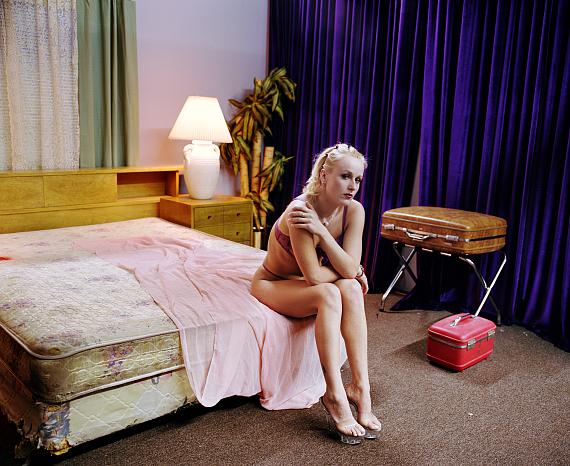
Sharon Wild, 2001, from the series The Valley
® The Estate of Larry Sultan, courtesy Galerie Thomas Zander, Cologne
HOLLYWOOD
Eve Arnold » Anton Corbijn » Philip-Lorca diCorcia » Michael Dressel » George Hoyningen-Huene » George Hurrell » Jens Liebchen » Ruth Harriet Louise » Inge Morath » Helmut Newton » Steve Schapiro » Julius Shulman » Alice Springs (June Newton) » Larry Sultan »
Exhibition: 3 Jun – 20 Nov 2022
Sun 20 Nov
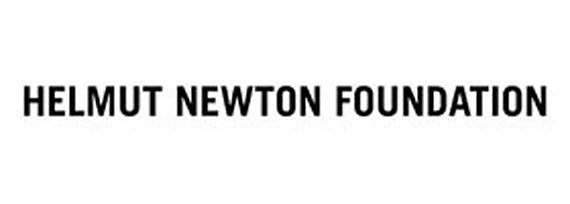
Helmut Newton Foundation
Jebensstr. 2
10623 Berlin
+49 (0)30-31864856
info@helmut-newton-foundation.org
www.helmutnewton.com
Tue-Sun 11-19, Thu 11-20
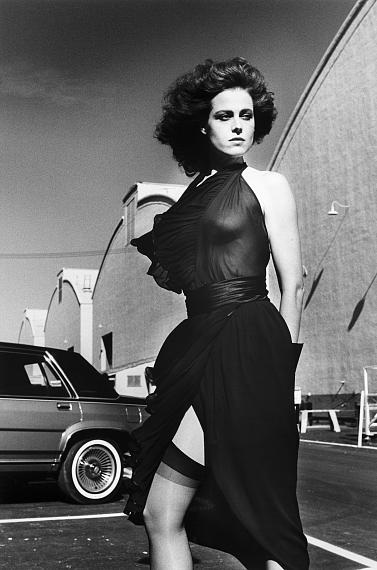
Sigourney Weaver at Warner Bros, Burbank 1983
© Helmut Newton Foundation
"HOLLYWOOD"
Eve Arnold, Anton Corbijn, Philip-Lorca diCorcia, Michael Dressel, George Hoyningen-Huene, George Hurrell, Jens Liebchen, Ruth Harriet Louise, Inge Morath, Helmut Newton, Steve Schapiro, Julius Shulman, Alice Springs, Larry Sultan
Exhibition: 3 June – 20 November 2022
Opening: Thursday, 2 June, 7 pm
On 2 June 2022, the Helmut Newton Foundation in Berlin will open its new exhibition "HOLLYWOOD" featuring works by Eve Arnold, Anton Corbijn, Philip-Lorca diCorcia, Michael Dressel, George Hoyningen-Huene, Jens Liebchen, Ruth Harriet Louise, Inge Morath, Helmut Newton, Steve Schapiro, Julius Shulman, Alice Springs, and Larry Sultan. Photographs by George Hurrell and publications by Annie Leibovitz and Ed Ruscha will also be on view in glass displays.
Helmut Newton is always the point of departure and reference for group exhibitions like this one. His photographic works often include references to film and even quote specific scenes, such as by Alfred Hitchcock or the French Nouvelle Vague. Starting in the 1960s, some of his fashion photographs seem cinematic in their staging, while from the 1970s onward, some of his portraits look like artful film stills. In the 1980s and ‘90s, Newton photographed actors at the Cannes Film Festival and fashion on the Croisette.
In addition to those images by Newton, this new group exhibition features 13 photographers and their interpretations of Hollywood, presented as usual in larger groups of works. The main exhibition space is dedicated to the medium of film and the Hollywood system. It features portraits of actors from Hollywood’s early years by Ruth Harriet Louise and George Hoyningen-Huene, as well as later film stills and on-set photographs by Steve Schapiro and several Magnum photographers, including Eve Arnold and Inge Morath, who documented the 1960 production of the John Huston film, Misfits.
A glass display presents an extensive portfolio of photographs by George Hurrell that Helmut Newton owned, along with some later works by Hurrell, who replaced Ruth Harriet Louise in 1930 as the most important Hollywood portraitist for the major film studios. Elsewhere in the same room hang five large-format color photographs from Larry Sultan’s series The Valley, a study of the porn film industry near Hollywood – the largest of its kind and, in a sense, the equally lucrative dark side of the dazzling world of glamour. Gracing the walls of another part of the space are five large, minimalistic black-and-white portraits shot by Anton Corbijn in Los Angeles, from Clint Eastwood to Tom Waits. A further display case holds Annie Leibovitz’s famous Hollywood portraits, which she shoots every year for Vanity Fair. The Oscar winners depicted in panoramic group portraits appear on gatefold covers of the magazine.
As a whole, this room traces a historical arc over an entire century – from the early star portraits of the 1920s, which set a precedent, to present-day Hollywood, and from vintage prints of various sizes to magazine reproductions.
In the back exhibition room, the focus is on the city of Los Angeles. Julius Shulman’s architectural photographs showcase legendary mansions in Hollywood Hills and Beverly Hills. These architectural icons of L.A. modernism were often the home of film stars and producers and occasionally served as film sets. Appearing in sharp contrast are Michael Dressel’s striking, sometimes unsparing portraits of the failed and disillusioned and even Hollywood tourists. These fleeting encounters are captivating in their spontaneity and situational composition. Jens Liebchen began work on his color series L.A. Crossing in 2010 as part of the "La Brea Matrix" project initiated by Markus Schaden, aiming to trace the footsteps of Steven Shore. From the window of his rental car, Liebchen photographed what at first glance seems to be unspectacular street scenes. Viewed as a series, however, the images unfold into a compassionate sociological study. On the opposite wall is Philip-Lorca diCorcia’s Hustler series from the 1990s, portraits of male prostitutes around Santa Monica Boulevard. Each photograph’s title includes the sitter’s name, place of origin, and hourly rate – the latter in this case referring to the fee for the photograph. Flipped open in the central display case, Ed Ruscha’s legendary 1966 accordion-fold leporello, Every Building at the Sunset Strip provides an architectural and social backdrop for the other photographers’ later images of the same sites and street corners, which hang on the walls in this exhibition space.
A different kind of street photography is on view in June’s Room, which Alice Springs shot on Melrose Avenue in West Hollywood in 1984. The images capture the music-based counterculture of punks and mods and other style-conscious individualists who transformed the streets into a stage as if life were a casting show.
With these images, the group exhibition traces the allure of Hollywood that continues to draw many people to Los Angeles in search of work in the film industry. We glimpse both the official and private lives of stars, the villas of the rich and beautiful, film-loving fans, as well as numerous secondary motifs, such as film props in the studios. On the one hand, the exhibition looks back upon 100 years of Hollywood through these select works. At the same time, its perspective is utterly contemporary, paying homage to the slowly fading splendor of an entire era. Cinematographic storytelling is continued here with photographic means.
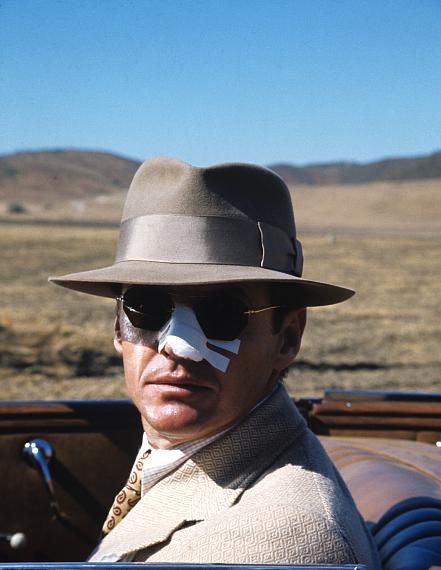
Jack Nicholson as Jake Gittes in 'Chinatown' by Roman Polanski, Los Angeles 1974
© Steve Schapiro
"HOLLYWOOD"
Eve Arnold, Anton Corbijn, Philip-Lorca diCorcia, Michael Dressel, George Hoyningen-Huene, George Hurrell, Jens Liebchen, Ruth Harriet Louise, Inge Morath, Helmut Newton, Steve Schapiro, Julius Shulman, Alice Springs und Larry Sultan
Ausstellung: 3. Juni bis 20. November 2022
Eröffnung: Donnerstag, 2. Juni, 19 Uhr
Ab dem 3. Juni 2022 zeigt die Berliner Helmut Newton Stiftung die neue Gruppenausstellung „HOLLYWOOD“ mit Werken von Eve Arnold, Anton Corbijn, Philip-Lorca diCorcia, Michael Dressel, George Hoyningen-Huene, Jens Liebchen, Ruth Harriet Louise, Inge Morath, Helmut Newton, Steve Schapiro, Julius Shulman, Alice Springs und Larry Sultan. In Vitrinen werden zusätzlich Fotografien von George Hurrell sowie Publikationen von Annie Leibovitz und Ed Ruscha präsentiert.
Helmut Newton ist für Gruppenausstellungen wie dieser stets Ausgangs- und Bezugspunkt; in seiner Fotografie hat er sich immer wieder auf das Kino bezogen, aber auch konkrete Filmszenen zitiert, etwa von Alfred Hitchcock oder der französischen Nouvelle Vague. So wirken einige seiner Modeinszenierungen seit den 1960er-Jahren geradezu kinematografisch, und manche Porträts seit den 1970er-Jahren wie kunstvolle Film-Stills. In den 1980er und 90er-Jahren wiederum fotografierte Newton während des Filmfestivals auch Schauspieler*innen oder Mode an der Croisette von Cannes.
In der neuen Gruppenausstellung werden darüber hinaus dreizehn Fotografinnen und Fotografen mit ihren Interpretationen von Hollywood präsentiert, wie üblich in größeren Werkgruppen. Der Hauptraum ist dem Medium Film und dem System Hollywood in unterschiedlichen Aspekten gewidmet: Schauspieler*innen-Porträts aus der frühen Hollywood-Zeit von Ruth Harriet Louise und George Hoyningen-Huene, weiterhin spätere Standbilder und Filmsets von Steve Schapiro und mehreren Magnum-Fotograf*innen, darunter Eve Arnold und Inge Morath, die 1960 während der Dreharbeiten des John Huston-Film Misfits fotografierten.
In einer Glasvitrine wird überdies eine umfangreiche Portfolio-Mappe aus dem Besitz von Helmut Newton mit etwas späteren Aufnahmen von George Hurrell präsentiert, der Ruth Harriet Louise 1930 als wichtigster Hollywood-Porträtist der großen Filmstudios ablöste. Im gleichen Raum, etwas separiert, hängen weiterhin fünf großformatige Farbaufnahmen aus Larry Sultans Bildserie The Valley, mit der er die Pornofilm-Industrie nahe Hollywood untersucht hat, der größten überhaupt, gewissermaßen die ebenso lukrative Schattenseite der strahlenden Glamourwelt. In einem anderen Raumkompartiment sind fünf große, formal reduzierte Schwarz-Weiß-Porträts aus Los Angeles von Anton Corbijn präsentiert, von Clint Eastwood bis Tom Waits. In einer weiteren Vitrine sind die berühmten Hollywood-Porträts von Annie Leibovitz ausgebreitet, die sie jedes Jahr für Vanity Fair fotografiert: die Oscarpreisträger*innen in panoramatischen Gruppenporträts als Klappcover des Magazins. So wird in diesem Raum der historische Bogen über ein ganzes Jahrhundert geschlagen, von den frühen Starporträts der 1920er-Jahre, die als vorbildhaft gelten können, bis in die heutige Zeit Hollywoods, von Vintage Prints unterschiedlicher Größen bis hin zu Zeitschriftenreproduktionen.
Im hinteren Ausstellungsraum liegt der Schwerpunkt auf der Stadt Los Angeles; hier sind Julius Shulmans Architekturaufnahmen der legendären Villen in den Hollywood Hills oder Beverly Hills zu sehen, architektonische Ikonen der L.A.-Moderne, in denen manche Filmstars oder Produzenten lebten oder die gelegentlich zum Filmset wurden. Demgegenüber zeigt uns Michael Dressel seine kontrastreichen, teilweise schonungslosen Porträts der Gescheiterten und Desillusionierten oder auch Hollywood-Touristen. Es sind flüchtige Begegnungen, die durch ihre Spontanität und situative Komposition bestechen. Jens Liebchens Farbbildserie L.A. Crossing entstand ab 2010 im Rahmen des von Markus Schaden initiierten Projekts "La Brea Matrix" auf den Spuren von Steven Shore. Aus seinem Mietwagen heraus fotografierte Liebchen vermeintlich unspektakuläre Straßenszenen, die sich in Form der Bildsequenz als empathisch-soziologische Gesellschaftsstudie entpuppt. Ihm gegenüber hängt Philip-Lorca diCorcias Hustler-Serie aus den 1990er-Jahren, also Porträts männlicher Prostituierter rund um den Santa Monica Boulevard. Im Bildtitel wird der Name der Porträtierten ebenso angegeben wie ihr Herkunftsort und ihr Stundensatz, der sich hier allerdings auf das Foto-Honorar bezieht. In der zentralen Vitrine wird Ed Ruschas legendärer Leporello Every Building at the Sunset Strip von 1966 aufgeblättert und bildet den architektonisch-gesellschaftlichen Bezugsrahmen für die Kollegen, deren spätere Fotografien von den gleichen Orten und Straßenecken in diesem Ausstellungraum an den Wänden hängen.
Eine andere Art von "Street Photography" ist dieses Mal in June’s Room zu sehen, aufgenommen im Jahr 1984 von Alice Springs auf der Melrose Avenue in West Hollywood. Dort begegnen wir der musikbasierten Gegenkultur der Punks und Mods und anderen Selbstdarstellern, die die Straße zur Bühne machen, als sei alles eine Castingshow.
So zeichnet diese Gruppenausstellung das Faszinosum Hollywoods nach, das noch immer viele Menschen auf der Suche nach Jobs in der Filmindustrie nach Los Angeles treibt. Wir sehen einige Stars, offiziell und privat, die Villen der Schönen und Reichen oder filmbegeisterte Touristen sowie zahlreiche Nebenmotive wie Filmrequisiten in den Studios. Die Ausstellung blickt über die gewählten Exponate einerseits 100 Jahre zurück und ist gleichzeitig hochaktuell; es ist eine Hommage an den langsam verblassenden Glanz einer ganzen Epoche, und so wird das kinematografische Storytelling hier mit fotografischen Mitteln fortgesetzt.
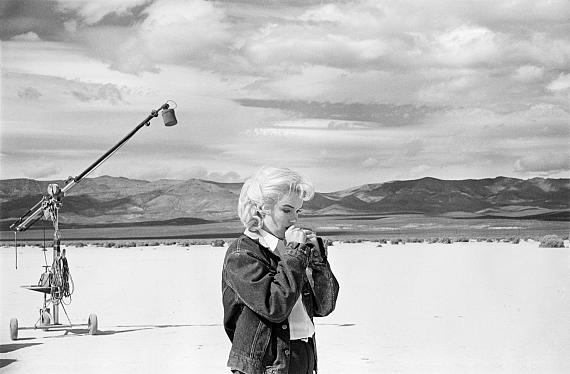
Marilyn Monroe going over her lines for a difficult scene she is about to play
with Clarke Gable in the film The Misfits, Reno, Nevada, 1960
© Eve Arnold/Magnum Photos
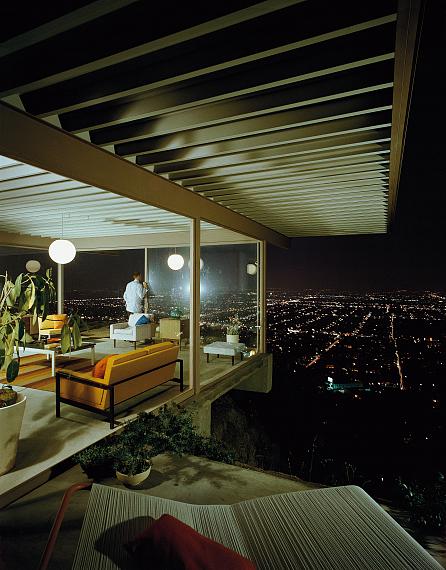
Stahl Residence (Case Study House #22), Los Angeles, 1960
© The Estate of Julius Shulman, courtesy TASCHEN
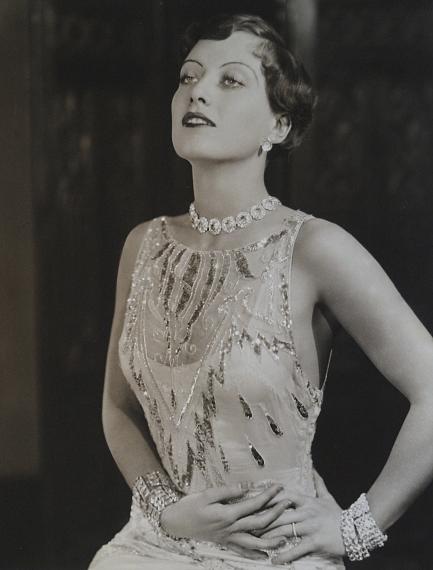
L.A. Crossing, 2010-2022
© Jens Liebchen, courtesy Galerie Springer Berlin
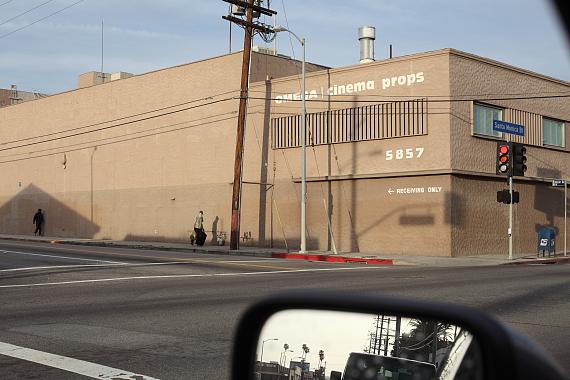
Joan Crawford für den Film Our Dancing Daughters, Hollywood 1928
© Ruth Harriet Louise, courtesy Sammlung Kothenschulte